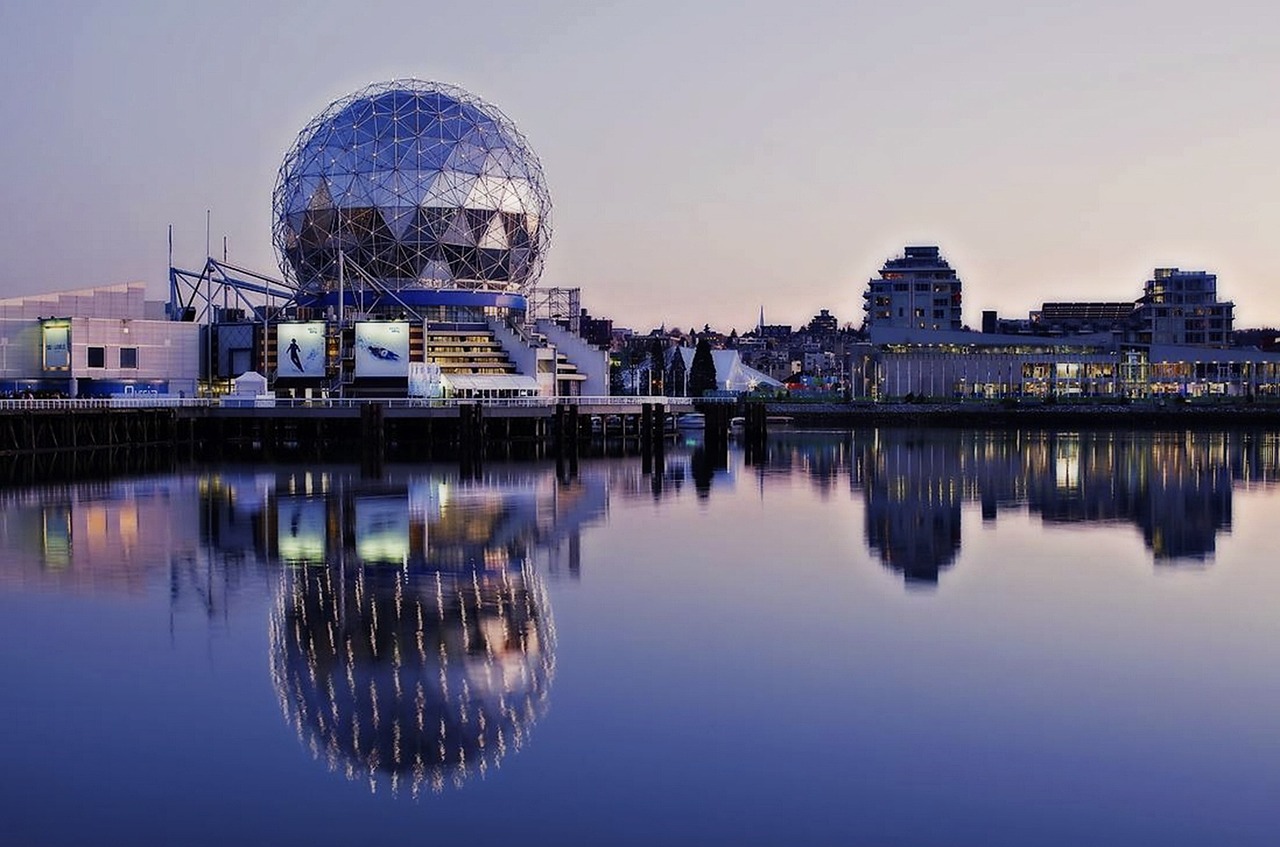Inventors and Patents From the City of Vancouver
Vancouver is a city, southwestern British Columbia, Canada. It is the centre of a major metropolitan area in western Canada. Vancouver is located between Burrard Inlet, an arm of the Strait of Georgia to the north, and the Fraser River Delta to the south. It lies opposite Vancouver Island. It is located just north of the U.S state of Washington.
The city of Vancouver is known for innovation. It has made contributions to a wide range of products. While the origins of some items may be murky, others were clearly born here. Vancouver is known for its innovation, and many things originate from its city.
While the history of some of these items is somewhat murky, others have a clear beginning and an obvious creator. Here are products with clear Vancouver connections. These products are popular with consumers, and their innovations have helped make the world a better place.
Vancouver is home to small-time inventors. Some are famous, while others are not so well-known. Inventors in the city can be found in many industries. From furniture to technology, there are inventors who have contributed to the local economy. The city also has a rich history of inventors.
Image credit: UnsplashAssignees
The City of Vancouver lists inventors and assignees of patents and inventions. For reference purposes, the assignees of inventions should be included in Vancouver Style bibliographic references. These references must include the names of inventors and assignees, as well as the date and place of publication. The number of pages and role signature of the assignee must also be included.
When writing bibliographic references for patents, it is important to list the assignees of a patent. The authors, inventors, and country of the patent must also be listed. The number of pages must also be included. In addition to this information, the assignees must be listed in the singular, regardless of whether there are multiple assignees.
The data is highly geolocalized. A patent or invention that is issued in one city is referred to by the address of its assignee in another city. This approach provides greater specificity when comparing inventors, since two inventors with the same name are likely to be referring to the same person. Moreover, assignee names and addresses are often provided with street-level information.
An inventor may assign his or her rights to an organization that employs the inventor. The assignee may not have a financial interest in the patent. The assignee can be the original inventor, or the organization that hired the inventor. The assignee may also change his or her role later.
Collaborations with other Canadian clusters
Collaborations with other Canadian clusters for inventor and patent creation are largely determined by geography. For example, inventors from Toronto, Ottawa, and Montreal tend to collaborate with inventors in the Northeast region of Canada. Those from Vancouver, Alberta, and Calgary, on the other hand, prefer collaborations with inventors in the farther western and eastern regions.
However, collaborations with inventors outside their clusters are also common. The percentages of collaborations between inventors in clusters differ by distance: more than 1600 km separate the two closest clusters. In contrast, collaborations within clusters are nearly twice as common as collaborations with collaborators outside Canada.
Despite the large number of patents issued in Canada, most of these are assigned to foreign entities, mostly in the US. Of these, 69% are assigned to the Xerox Corporation. Only 28% are assigned to Canadian companies. Most Canadian patents have at least one foreign assignee, with the largest number of foreign patents belonging to the Toronto and Montreal clusters. Ottawa and Vancouver only account for a small portion of patents.
While collaborations among Canadian clusters are common, they may not be as common as they might be. Researchers in other clusters may not be able to find the expertise they need inside their own clusters, and therefore must find outside collaborators for their projects. As a result, some Canadian inventors prefer to collaborate with foreign inventors instead of with fellow Canadians. This tendency is particularly noticeable among larger clusters.
Image credit: UnsplashUniversity of British Columbia
The University of British Columbia inventors and patents office (UILO) manages inventions that arise out of research activities at UBC. Inventions may be protected by Intellectual Property rights, but not teaching materials. Researchers who have invented something that they want to commercialize must complete a Sponsored Research Product Disclosure Form.
Inventions and Patents
The Caulking Gun
Although you may not think about it much, the caulking gun can be an integral part of your life.Caulk has been used in many ways over the years, from sealing leakages between tiles and floorboards to building ships.
Although it’s difficult to imagine a world without caulk guns, it was easier to use 130 years ago.While it’s commonly used for sealing boats, it also protects buildings against weather. He had been inspired by a cake maker who had used a piping bag to ice cakes.
Theodore Witte, a Canadian inventor from Chilliwack in British Columbia, filed a patent in 1894 for what he called a “Puttying-Tool”. The original Puttying-Tool consisted of a cylindrical nozzle in which adhesive putty was placed and then pushed out using a crank at the back.
Witte’s original patent stated that his invention was a “simple and inexpensive tool” in which a small amount of hard or soft mixed putty can be carried. The putty can be quickly and easily applied by Witte without the need to use a knife.
Witte was inspired by a baker who decorated his cakes with icing. The fact is that the caulking gun has been a key component of every construction project, regardless of whether or not it’s true.
Image credit: Google PatentsJolly Jumper
Olivia’s childhood on the Ojibwe White Earth Reservation, Minnesota inspired her baby swing design. She was familiar with the traditional practice of using a bouncer cradleboard for soothing babies.
Olivia was a mother to her first child in 1910. She remembered Ojibwe women, babies and children. In 1910 she created her first Jolly Jumper.Olivia’s grandchildren and children used the Jolly Jumper for babies. Tracey, her grand-daughter, is shown in 1958 (right photograph) wearing an early prototype.
From 1957 to 1959, her family’s business, Poole Manufacturing Co. Ltd. produced the Jolly Jumper in mass production. It was located at 161 Pemberton Ave. North Vancouver.In the 1960s, the business was sold by the Poole family.
Cosmetic Botox
While many people know that botulism and cosmetic surgery share a common ancestor (the Botulinum Toxin), not everyone is aware that Botox was created in British Columbia
After working with a colleague who had used the toxin for eye spasms, a Vancouver pair of doctors pioneered its use in the 1980s. Side effects included a smoothening of the skin around the eyes. This was something that people liked, even though doctors initially didn’t like it. However, word spread.
Automatic lubricating cup
It was so superior to all other types that railroad engineers requested it by name. Elijah McCoy invented the automatic lubricating cup that can be used to oil steam engines on ships and locomotives. McCoy’s cup was an instant success for railroaders around the globe when it was invented by a mechanical engineer in 1872.
It provided oil for the locomotive’s cylinders, bearings and axle box mountings. This improved productivity and allowed trains to run more efficiently, as they did not need to stop on the way to get their engines lubricated. McCoy developed his signature device over the years and made new versions.
He ended up with fifty patents relating to his lubricating systems. McCoy was a product of another type of railroad. This is a pleasing coincidence. McCoy was born to slaves who fled to Canada via Underground Railroad. He settled in Colchester (Ontario), near Windsor. He was a son of one railroad and a father to another. He is the McCoy.
Image credit: Google Patents
Electron Microscope
In 1938, the sub-microscopic world was made visible by two Canadian graduate students, Albert Prebus and James Hillier. The microscope, which had a magnification of 20,000, was able to magnify otherwise inaccessible structures and objects. It was created by two Canadian graduate students, Albert Prebus and James Hillier, who were part of the University of Toronto’s Physics department.
They also received technical support from Howard Chappelle, machinist Howard Woodward, and Howard Chappelle, glass blower. They created this innovative and elegant instrument together during the Great Depression. This microscope, which was based on German research, helped establish Canadian expertise in electron optics throughout the world.
Image credit: Google PatentsLondon fog
A London fog is a hot-tea-based drink made with Earl Grey tea, steamed milk, and vanilla syrup.. It was created in Vancouver in Canada by Mary Loria in the 1990s. Loria was pregnant at that time and frequented Vancouver’s Buckwheat Cafe.
She started recommending the drink to others and ordering it at other cafes after creating the drink. The trend spread quickly.
steam-powered fog horn
Robert Foulis is known as the inventor of the world’s first steam-operated fog alarm, which was installed on Partridge Island in 1859. While Foulis never patented or even profited from his life-saving innovation, his invention assisted fogbound mariners for over a century.
Robert Foulis discovered the sinking of SS Arctic while working at the Partridge Island Lighthouse. Foulis was inspired by this story to devise a better method to warn ships in foggy weather. Foulis concluded that a steam whistle with a series of coded blasts could work as a fog alarm. To help mariners identify their exact location, each location would emit a unique code.
Foulis petitioned for years the Light House Commissioners in order to have his invention placed in Saint John. In 1859, Partridge Island was finally home to the first steam-powered fog system in the world. Foulis was not recognized as the inventor of the fog alarm until it was confirmed by the government in 1864.
Cannery in Vancouver
The Cannery in Vancouver is a beloved Vancouver restaurant and landmark that first opened its doors in 1971. It has since gained an enviable reputation as one of the city’s top seafood destinations. Locals and tourists alike have enjoyed visiting the restaurant since it first opened. However, there’s more to the restaurant than just delicious seafood.
Located on the waterfront, The Cannery is easily accessible from downtown and offers ample parking. Its location tucked in the heart of an active port gives it a sense of exclusivity. Visitors will feel a sense of history and culture as they explore the relics of the city’s past.
The Cannery in Vancouver was an important site in the early development of the province’s fishing industry. It was the first in the Fraser River and B.C. It was founded by James Syme, who started canning from his home and sold it in lots to merchants. By 1870, the cannery was owned by Alexander Loggie and Co.
The Cannery in Vancouver was one of Canada’s largest seafood factories and it employed people from all over the world. Many of the employees worked long hours, side by side. Their work included processing mountains of sockeye. The company also employed women who were crucial to the success of its operations.
Although it may seem obvious that .ca exists in URL’s, it must have its origin somewhere. It is a top-level domain that corresponds to a country code. However, it is not as if all countries agreed to the domains at the same time.
It was more ad-hoc, with domains often set up by computer scientists. The first six domains in 1985 were all generic like.com or.net.After other countries had started the trend in 1987, Canada joined the party when John Demco from UBC gave.ca. UBC was not the first to get.ca. The University of Prince Edward Island got the website.
https://www.ycombinator.com/documents/
https://techcrunch.com/
https://www.uspto.gov/learning-and-resources/startup-resources
https://www.sba.gov/business-guide/plan-your-business/fund-your-business
https://hbr.org/1998/11/how-venture-capital-works
http://patentpc.com/
http://uspto.gov/
Inventors and Patents From the City of Birmingham
Inventors and Patents From the City of Stamford
Inventors and Patents From the City of Paterson
Free Patent Filing Assistance In Alaska
Free Pro-bono Patent Help In Idaho





